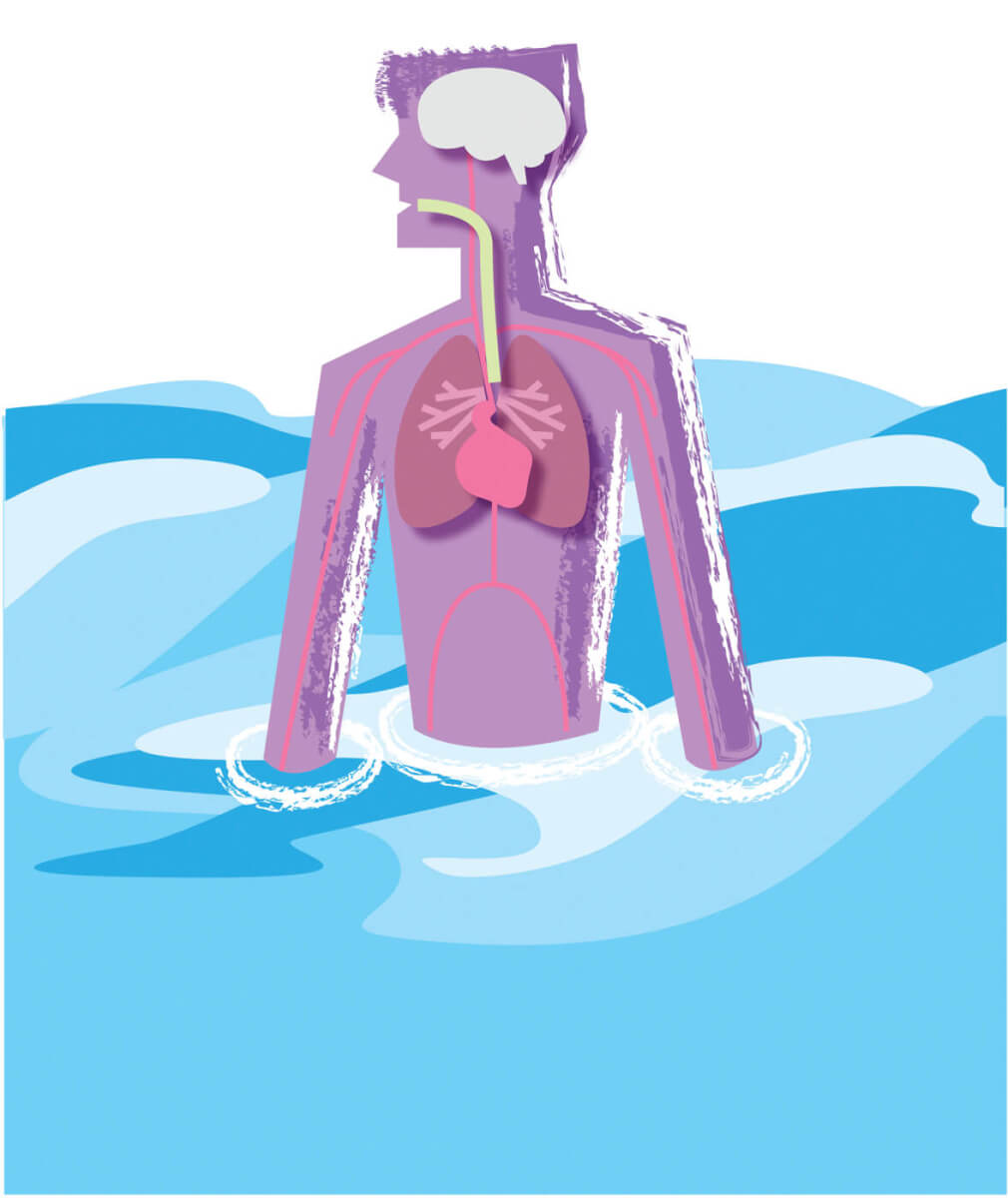It is one of our most primitive but visceral fears; thrashing in the deep, far below the water’s surface, lungs burning for oxygen, arms straining toward the ever darkening light above.
Human beings are not well adapted to live in the water. We are poor swimmers compared to other mammals, and we lack the body fat to maintain a proper temperature. The world record for holding breath underwater is an astonishing 22 minutes, held by Stig Severinsen of Denmark.
However, there is only a short amount of time an organ in the human body can go without oxygen. Sometimes it can be just a few seconds before damage occurs and, usually, the brain is the first to be affected. Drowning is the third most common cause of accidental death worldwide, accounting for seven percent of all deaths. According to the World Health Organization more than 350,000 people die every year from drowning, and those numbers don’t include floods or boat accidents.
When a person’s face touches water the mammalian diving reflex begins, initiating a series of involuntary physiological responses. Designed to keep the body alive in the water, the airway closes, the heart rate slows, and the capillaries in the skin and extremities constrict, sending blood toward the vital organs.
 Initial reaction: If underwater for an extended period of time the body accumulates the gas carbon dioxide, which, when present in the lungs, triggers the desire to breathe. Eventually a drowning victim will involuntarily draw in a breath.
Initial reaction: If underwater for an extended period of time the body accumulates the gas carbon dioxide, which, when present in the lungs, triggers the desire to breathe. Eventually a drowning victim will involuntarily draw in a breath.
Arms: Once a person realizes that air is out of reach, panic sets in, accompanied by a large amount of thrashing and movement which expends a lot of energy and consumes more oxygen.
Mouth: When water is inhaled, the first reaction is to cough, choke, and/or swallow the water. This typically leads to more water being gulped.
Lower throat: When water reaches the throat, it tries to seal off the throat with a series of spasms (like gulps). Water, with nowhere else to go, ends up in the stomach, which is quickly filled.
Lungs: Once the drowning victim is unconscious, the throat relaxes and water fills the lungs to capacity. However, in 20 percent of drowning victims the larynx remains sealed (this is called a dry drowning).
Veins/arteries: After a short time without air, the oxygen level in the bloodstream decreases.
Heart: Lack of oxygen stops the process of aerobic metabolism, which is how your body converts carbohydrates and fat into energy. The body becomes acidotic, and too much acid leads to electrical conductivity issues in the heart, which then ceases to function.
Blood cells: Fresh water filling the lungs is hypotonic to the blood, meaning it seeps into the blood stream, dilutes the plasma/electrolytes, and causes the red blood cells to swell and burst. Saltwater has the opposite effect, becoming hypertonic to the blood passing near the lungs. The plasma gets sucked into the lungs and fills them. Either way, air and gas cannot be exchanged.
Brain: Though the brain is first affected by the lack of oxygen, it is usually the last to shut down. When blood pressure drops to around the 25-30 mmHg range, a person is usually rendered unconscious. This is called hypoxia, but the brain can continue to function, depending on conditions, for some time.
- On average, there are around 3,000 fatal unintentional drownings in the United States each year.
- About one in five people who die from drowning are children 14 and younger.
- Nearly 80 percent of people who die from drowning are male.
- Among children 1 to 4 years old who died from an unintentional injury, more than 30 percent died from drowning.
- Over 72 percent of boating deaths are caused by drowning, with 88 percent of victims not wearing life jackets.
- About 90 percent of drowning cases occur in fresh water.


